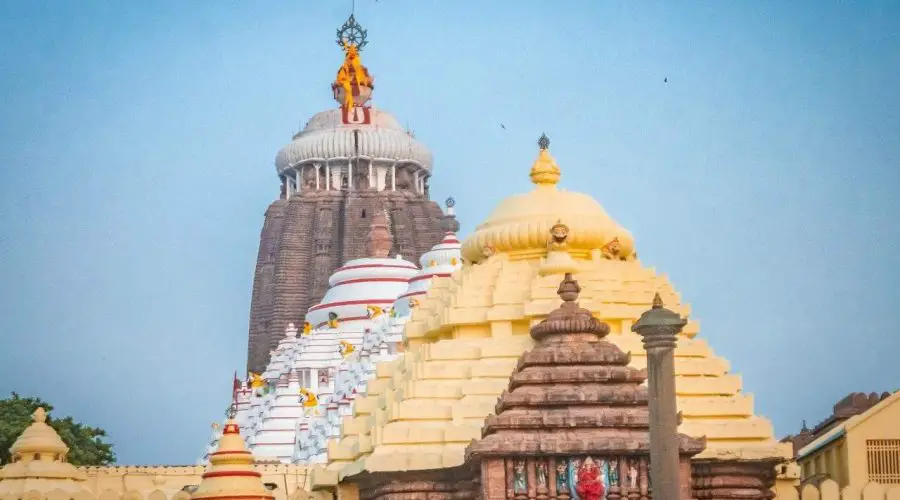Know those 9 Mysteries behind the Great Jagannath Temple
For believers, Puri’s iconic Jagannath Temple maintains a special position of honour. It is one of India’s Char Dham pilgrimage sites, as well as the venue of the annual Rath Yatra chariot event.
The history behind the temple
According to mythology, King Indradyumn established this sacred sanctuary after Lord Vishnu blessed and directed him to Nila Madhava in his visions.
King Indradyumn discovered an iron rod lying in the river while taking a holy swim. Lord Vishnu is said to have then whispered to him that the floating rod represents his heart, which would never leave the country. The monarch then rushed to Lord Jagannath with the rod and inserted it in him quietly. No one was ever permitted to sight or touch the rod.
Sapt Rishis are said to have urged the Pandavas to visit the ‘Char Dham’ on their way to Yamraj in order to come closer to moksha.’ Jagannath Temple in Puri is one of the ‘Char Dham’ sacred locations. Since then, the Jagannath idol has always been off-limits to the public, and worshippers may only visit him for a limited time.
9 Mysteries around Jagannath temple that defy scientific logic
Apart from these facts, Puri’s Jagannath Temple is also noted for a number of mysteries that defy scientific explanations. People think that these mysteries are Lord Jagannath’s blessings. However, one must visit the temple to believe it.
Here are some of those mysteries around Jagannath temple that defy scientific logic :
1. The logic-defying temple flag
The temple’s flag mysteriously always flies in the opposite direction of the wind. Your scientific thinking comes to a stop when you see the flag flying in the other way, and you begin to believe that there is a force greater than science.
2. Sudarshan Chakra
The chakra itself is 20 feet tall and weighs a tonne. It is attached to the temple. But what’s fascinating about this chakra is that it can be seen from everywhere in Puri. The engineering puzzle around the placement and location of chakras remains a mystery since you can always feel the chakra facing you, regardless of your posture.
3. There are no aircraft or birds flying over the shrine.
No birds or aircraft fly over the shrine, which may surprise you. In contrast, such a feature is uncommon in any other Indian temple. The location is really a no-fly zone that has been established by some heavenly force rather than by any political authorities. This phenomenon, too, seems to be without explanation. It’s still a mystery to me.
4. The temple’s construction
The temple is built in such a way that it does not throw any shadows at any time of day. It’s still unclear if this is a technical wonder or phenomenon that can only be explained by supernatural intervention.
5 Simhadwaram’s Mysteries
The Jagannath temple has four doorways, with Singhadwaram serving as the main entrance. The sound of waves may be heard as you enter via Sindhadwaram, but as you pass through Singhadwaram, just turn around and walk back in the same way; you will no longer hear the sound of waves. In fact, as long as you are within the temple, you will not hear the sound of waves.
6. The sea’s enigma
You must have noticed that during the day, the wind from the sea blows toward the land, but in the evening, the wind from the land blows toward the sea. However, the geographical rules are inverted in Puri. Exactly the reverse occurs here.
7. A 1800-year-old custom
A priest changes the flag every day atop the temple, which is as tall as a 45-story skyscraper. This tradition dates back over 1800 years. If this rite is ever missed, the temple is said to stay closed for the following 18 years.
8. The riddle of prasadam
Nothing is thrown away at Jagannath Temple. Records show that 2,000 to 20,000 worshipers attend the shrine on any given day. However, the amount of prasadam prepared in the temple stays constant throughout the year. The prasad, on the other hand, is never wasted or inadequate on any particular day.
9. Prasadam’s preparation method
This unique delicacy is prepared in pots over an open fire. This is done using seven pots stacked one on top of the other. It’s worth noting that the contents of the uppermost pot are cooked first, followed by the contents of the flower pots.

